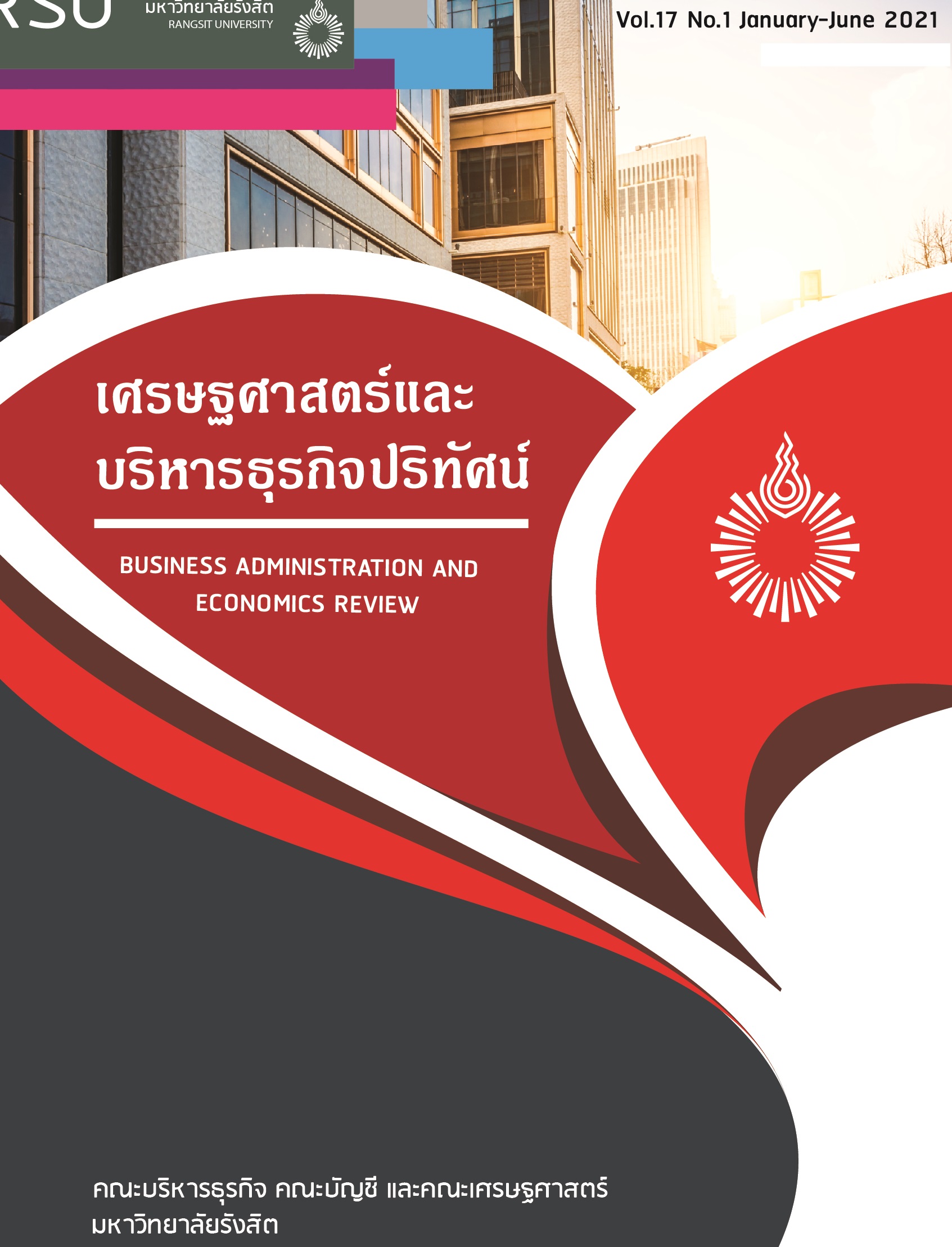Management of Tourism Community Participation to “NAWATWITHI” OTOP Community Tourism Project
Keywords:
“Nawatwithi” OTOP community project, ParticipationAbstract
This study aimed 1) to study the tourism contexts of “Nawatwithi” OTOP community tourism project; 2) to investigate the participatory process of Community-based tourism through the project. This study employed the qualitative research approaches including related literature review along with the in-dept interviews with 10 key informants who were involved in the community i.e., public, private sectors and civil society. and analyzed using descriptive. The results were analyzed and discussed according to the research objectives. The results of the study revealed that the tourism context can be physically differentiated from other tourist attractions. The significant potential for tourism in the “Nawatwithi” OTOP community is ranged from accommodation and travel routes, particularly tourist attractions which are dominant in its primitive nature. In terms of community tourism participation in the project consisted of three aspects; 1) participation in planning development 2) participation in working progress and; 3) Participation in monitoring and evaluating process. These practices were proposed to co-create from the collaboration of key relevant entities to develop concrete indicators as guidelines to evaluate a comprehensive level of participation based on the guideline summary for effective development.
References
Baopakdee, A. (2009). Participation Theory. Retrieved from http://www.tipa.or.th/writer/read.
Chairatana, P. & Na Thalang, C. (2017). Potential of Tourism Resources in Udon Thani Province. Dusit College Journal Vol.11 No.2 May - August 2017. Pp.124-142.
Cohen, J. M., & Uphoff, N. T. (1980). Participation Place in Rural Development: Seeking Clarity through Specificity, World Development. New York: Cornell University
Community Development Department, 2017. Retrived https://www.cdd.go.th/
Creighton, J.L.(2005). The Public Participation Handbook : Making Better Decisions through Citizen Involvement. Jossey Bass.
Denhardt, J.V. & Denhardt, R.B. (2015). The new public service : Serving, not steering. (4th ed.). New York, NY : Rlutledge.
Department of Tourism, 2561
Erwin, W. (1976). Participation Management: Concept, Theory and Implementation. Atlanta, GA: Georgia State University.
Kantapon Kaewsanga (2013). Knowledge Management of Creative Tourism in Cultural Tuourist Attractions, Phimai District, Nakhon Ratchasima. Thesis School of Information Technology, Suranaree University of Technology, Institute of Social Technology.
Kasemsuk, J. (2018). Communication and Social Change. BKK : Chulalongkorn University.
Kasemsuk,C. (2018). Public Participation Approach for Sustainable Community Development. Academic Journal of Humanities and Social Sciences Burapha University. Vol.26 No.50 (2018) (Jan.- April. 2018) pp.169-186.
Matka, M.M. & Kistler, M. (2016). Contiguous community development. International Development Program, College Of Health and Social Sciences, Eastern University, USA.
Ministry of Tourism and Sports. (2012). Tourism Strategic Plan of 2554-2558. Bangkok. Ministry of Tourism
Niekerk, M. V. (2013). Advocating community participation and integrated tourism development planning in local destinations: The case of South Africa. University of Central Florida, Rosen College of Hospitality Management, 9907 Universal Boulevard, Orlando,USA.
Pankasem, T. & Prachaknate, P. (2016).Participatory Communication for Promoting Creative Tourism in NAN. National Conference 2016. Institute of and Management Innovation, National Institute of Development Administration (1 July 2016). Pp.155 – 176.
Pearce, D. G. (1989). Tourist Development (2nd ed.). New York: Longman.
Pruseit, K. (2010). Public relations for community's participation in promoting of cultural tourism. Thesis Chulalongkorn University, Academic Year 2010. Degree of Master of Arts Program in Public Relations.
Richards, G. & Raymond, C. (2000). Creative tourism. ATLAS News, 23, 16-20.
Rogers, E. M. (1995). Diffusion of Innovations. 4thed. New York: The Free Press.
Siriprakrob, P. (2019). 3 Paradigms of Public Administration : Concept, Theories, and Practices. Bangkok : Chulalongkorn printing.
Yang, K. and Callahan, K. (2007). Citizen Involvement Efforts and Bureaucratic Responsiveness: Participatory Values, Stakeholder Pressures, and Administrative Practicality. Public Administration Review, 67, 249-264.
Yavaprabhas, S.(2014). Public Policy. 10th editer. cuprint.
แผนพัฒนาการท่องเที่ยวแห่งชาติ ฉบับที่ 2, 2560)
กรอบยุทธศาสตร์ชาติระยะ 20 ปี
แผนพัฒนาเศรษฐกิจและสังคมแห่งชาติฉบับที่ 12 (พ.ศ. 2560-2564)
แผนพัฒนาเศรษฐกิจและสังคมแห่งชาติ ฉบับที่ 11 (พ.ศ.2555-2559)
Downloads
Published
How to Cite
Issue
Section
License
Copyright (c) 2021 Business Administration and Economics Review

This work is licensed under a Creative Commons Attribution-NonCommercial-NoDerivatives 4.0 International License.
The contents in Business Administration and Economics Review can be used for publication. But do not modify, modify or use it for trade and profit.

